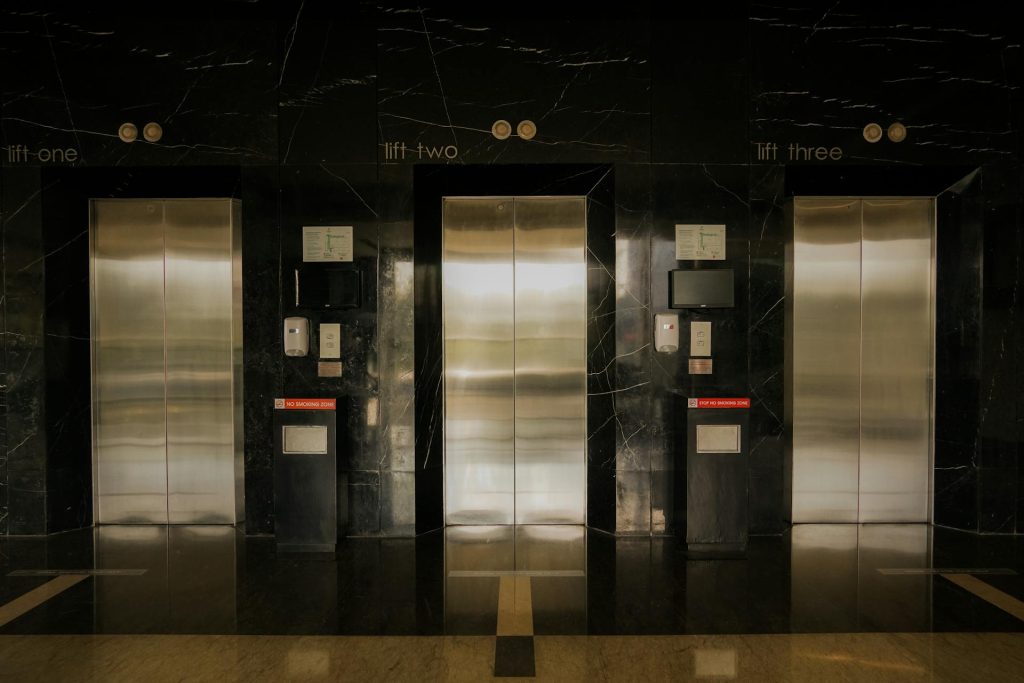Electric elevators have revolutionized vertical transportation in buildings, offering convenience, speed, and accessibility like never before. In this article, we delve into the fascinating world of electric elevators, exploring the diverse types available and their applications in both residential and commercial settings. From traditional hydraulic elevators to cutting-edge gearless traction systems, readers can expect a comprehensive overview of this essential aspect of modern architecture.
Discover how electric elevators have not only transformed the way we navigate tall structures but also positively impacted urban development and sustainability efforts. By the end of this exploration, you can look forward to gaining valuable insights into choosing the right elevator for your building’s needs and understanding the latest technological advancements driving elevator innovation forward.
The Evolution of Electric Elevators
Electric elevators have revolutionized vertical transportation since their inception in the late 19th century. The introduction of electric motors in elevators marked a significant shift from steam-powered systems, offering improved efficiency and safety. This transition paved the way for taller buildings and transformed urban landscapes worldwide.
Early electric elevators were simple and primarily used for freight purposes. However, advancements in technology led to the development of passenger electric elevators, making vertical travel more accessible and convenient for people. As cities grew taller, the demand for efficient vertical transportation increased, driving further innovation in elevator design and functionality.
The evolution of electric elevators also saw improvements in speed, capacity, and safety features. From manual controls to automated systems and destination dispatching, each innovation aimed to enhance user experience and streamline vertical transportation operations. Today, electric elevators continue to evolve with smart technologies and sustainable practices, shaping the future of building infrastructure with efficiency and elegance.
Understanding the Different Types of Electric Elevators
When it comes to electric elevators, there are several types that cater to different needs and architectural requirements. The most common types include traction elevators, hydraulic elevators, machine-room-less (MRL) elevators, and pneumatic vacuum elevators.
1. Traction Elevators: These elevators are driven by electric motors located at the top of the elevator shaft. They use steel ropes or belts to move the elevator cab up and down. Traction elevators are known for their smooth operation and are commonly used in high-rise buildings due to their efficiency and speed.
2. Hydraulic Elevators: Hydraulic elevators operate using a piston that moves within a cylinder to lift and lower the elevator cab. These types of elevators are often chosen for low-rise buildings as they require less overhead space compared to traction elevators. They are known for their energy efficiency and quiet operation.
How Electric Elevators are Used in Residential Buildings
Electric elevators have revolutionized the way we think about vertical transportation in residential buildings. Beyond just providing convenience, these elevators enhance accessibility and improve the overall quality of living for residents. In high-rise residential buildings, electric elevators offer a seamless way for occupants to move between floors effortlessly, fostering a sense of community and connectedness.
Moreover, electric elevators in residential buildings are not just functional; they can also be aesthetically pleasing and add a touch of luxury to living spaces. With sleek designs and advanced technology, modern electric elevators complement the overall architecture and interior design of residential buildings, creating a seamless blend of form and function.
One of the key benefits of having electric elevators in residential buildings is the increase in property value. Homes equipped with state-of-the-art elevator systems are often more attractive to potential buyers or renters, adding a competitive edge to real estate listings. The presence of electric elevators can elevate the prestige and desirability of residential properties, making them stand out in a crowded market.
Enhancing Accessibility in Commercial Buildings with Electric Elevators
Improving Vertical Mobility: Electric elevators play a crucial role in enhancing accessibility within commercial buildings. By providing vertical transportation, these elevators enable individuals with mobility challenges to navigate multi-story structures with ease and independence. This not only improves accessibility but also promotes inclusivity in the workplace.
Promoting Efficiency and Productivity: In commercial settings, time is of the essence. Electric elevators streamline movement between floors, saving valuable time for employees and visitors. By reducing the need to use stairs, elevators enhance efficiency and productivity within the building. This seamless vertical transportation contributes to a smooth workflow and enhances overall operational effectiveness.
Fostering a Welcoming Environment: The presence of electric elevators in commercial buildings sends a powerful message of inclusivity and accommodation. It shows that the establishment values accessibility for all individuals, regardless of their physical abilities. By creating a welcoming environment through easy access to different floors, electric elevators contribute to a positive atmosphere that prioritizes convenience and comfort for everyone.
The Impact of Electric Elevators on Urban Development
Electric elevators have played a transformative role in shaping urban landscapes around the world. By enabling vertical growth in buildings, they have revolutionized the way cities are designed and utilized space. The introduction of high-speed electric elevators has allowed for the construction of skyscrapers that redefine city skylines.
Furthermore, electric elevators have contributed to increased population density in urban areas by facilitating efficient vertical transportation. This has led to more sustainable urban development practices, as cities can grow upwards rather than outwards, reducing sprawl and preserving green spaces. The accessibility provided by electric elevators promotes inclusivity and ensures that all individuals can navigate urban environments with ease.
In addition to their practical benefits, electric elevators have also had a profound cultural impact on urban development. They symbolize progress, innovation, and modernity, becoming architectural marvels that captivate residents and visitors alike. The presence of state-of-the-art electric elevators in iconic buildings serves as a testament to human ingenuity and our ability to push the boundaries of what is possible in urban design.
Design Trends in Electric Elevators for Modern Spaces
When it comes to modern spaces, design trends in electric elevators have evolved to seamlessly blend functionality with aesthetics. Architects and designers are incorporating sleek and minimalistic designs that not only serve their purpose efficiently but also elevate the overall ambiance of the building.
In recent years, there has been a surge in demand for custom-designed electric elevators that cater to specific architectural styles and interior themes. From glass-enclosed elevators offering panoramic views to elevators with artistic finishes and integrated lighting, the focus is on creating a memorable experience for passengers while adding a touch of sophistication to the space.
Sustainability is at the forefront of design trends in electric elevators for modern spaces. Manufacturers are implementing energy-efficient technologies, such as regenerative drives and LED lighting, to reduce the environmental impact of elevator operations. This eco-conscious approach not only aligns with green building practices but also appeals to occupants who value sustainability and innovation.
Sustainability and Efficiency: The Benefits of Electric Elevators
Electric elevators are not only convenient but also environmentally friendly. The use of electricity as a power source reduces reliance on fossil fuels, leading to lower carbon emissions. This contributes to a cleaner and greener environment, aligning with the global push for sustainable practices in all industries.
Furthermore, electric elevators are designed with energy efficiency in mind. Modern technology allows for regenerative drives that capture and reuse energy during operation, reducing overall energy consumption. This not only lowers operating costs for building owners but also promotes energy conservation, making electric elevators a smart choice for environmentally conscious individuals and businesses.
Embracing electric elevators supports the shift towards eco-friendly building solutions. By choosing sustainable options like electric elevators, we contribute to a more sustainable future for generations to come. The positive impact on both the environment and operational costs underscores the value of incorporating sustainability into every aspect of our lives, including vertical transportation systems.
Choosing the Right Electric Elevator for Your Building
Understanding Your Building’s Needs
When selecting an electric elevator for your building, it is crucial to assess the specific needs of the space. Consider factors such as building height, daily traffic flow, and any accessibility requirements. Understanding these needs will help you choose an elevator that can efficiently serve your building’s occupants.
Exploring Different Types of Electric Elevators
There are various types of electric elevators available in the market, each designed to cater to different purposes. From traditional hydraulic elevators to modern gearless traction elevators, exploring these options can help you determine which type aligns best with your building’s design and functionality requirements.
Consulting with Elevator Professionals
Seeking guidance from experienced elevator professionals is essential in choosing the right electric elevator for your building. These experts can provide valuable insights into factors such as energy efficiency, maintenance requirements, and safety features. By consulting with professionals, you can make an informed decision that ensures optimal performance and longevity for your elevator system.
Maintenance Tips for Electric Elevators
Regular maintenance is crucial for ensuring the smooth operation and safety of electric elevators. Here are some essential maintenance tips to keep your elevator in optimal condition:
1. Schedule Routine Inspections: Regularly inspecting the elevator components, such as cables, pulleys, and doors, can help identify any potential issues before they escalate. This proactive approach can prevent costly repairs and ensure the longevity of the elevator.
2. Lubricate Moving Parts: Proper lubrication of moving parts like gears and rollers is vital for reducing friction and wear. By following the manufacturer’s guidelines on lubrication frequency and using recommended lubricants, you can extend the lifespan of these critical components.
3. Monitor Control Systems: Regularly checking the control systems, including buttons, sensors, and emergency stop functions, is essential for safety compliance. Conducting diagnostic tests to ensure all controls are functioning correctly can prevent potential accidents and downtime.
Advancements in Electric Elevator Technology
In the realm of electric elevator technology, recent advancements have revolutionized the way we perceive vertical transportation. One of the most notable innovations is the development of regenerative drives, which enable elevators to capture and reuse energy during operation. This not only enhances energy efficiency but also reduces carbon footprint, aligning with sustainability goals.
Moreover, the integration of smart technologies such as IoT (Internet of Things) has ushered in a new era of connectivity and convenience. Elevators equipped with IoT capabilities can predict maintenance needs, optimize traffic flow, and even provide personalized user experiences through features like voice recognition and destination dispatch systems. These enhancements not only improve efficiency but also elevate the overall passenger experience.
Another cutting-edge advancement is the implementation of destination control systems that utilize algorithms to group passengers traveling to similar floors together. By minimizing stops and reducing travel time, these systems enhance efficiency and throughput in high-rise buildings. Additionally, advancements in materials science have led to lighter yet stronger components, allowing for sleeker designs and more innovative elevator configurations that blend seamlessly with modern architectural trends.
Conclusion
As we conclude our exploration of the various types of electric elevators and their applications in residential and commercial settings, it is evident that these vertical transportation systems play a crucial role in shaping the way we interact with buildings and urban spaces. The evolution of elevator technology has not only enhanced accessibility and convenience but has also contributed to sustainable and efficient building practices.
By embracing the design trends, sustainability initiatives, and technological advancements in electric elevators, we are moving towards a future where vertical mobility is seamlessly integrated into our daily lives. As we look ahead, let us envision a world where electric elevators continue to elevate our experiences, both figuratively and literally, fostering an environment where accessibility, efficiency, and innovation converge harmoniously.




